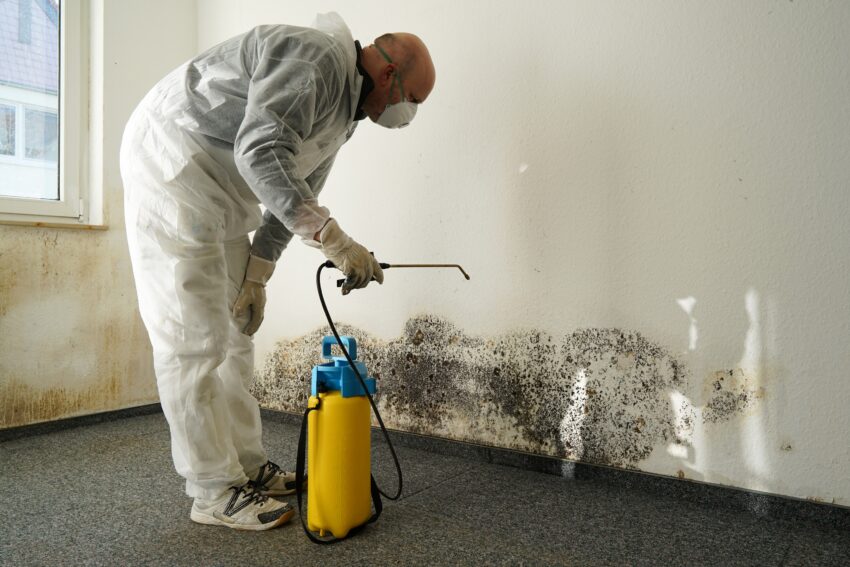The average mold remediation cost is about $3,500, depending on several factors. The extent of the mold infestation, how easy it is to access, and what type of mold you have are some of the most significant factors influencing the cost of mold remediation. We’re going over everything you need to know about the cost and methods of mold remediation so you can dive in with the knowledge you need to make an informed decision.
Factors That Influence Mold Remediation Cost
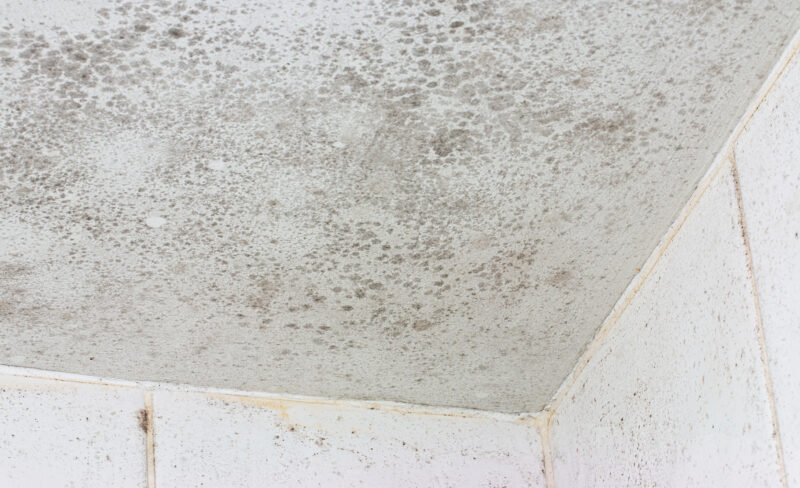
Molds are found everywhere in the world, and as part of the Fungi Kingdom, they play essential roles in decomposing and breaking materials down. It’s part of natural ecological cycles, but in your home, molds are destructive and can be toxic.
The extent of the mold infestation in your home and how accessible it is to remediation experts are some of the most significant factors that affect the cost of mold remediation.
Here are some things to keep in mind when you’re considering hiring a professional to treat a mold problem in your home:
Size and Area Covered
The best estimates suggest that people spend about $10 to $25 per square foot for mold remediation, so the size of the infestation is one of the most significant determiners of the total cost.
Severity of Growth
If you catch a mold infestation before it spreads, it will cost much less. Severe mold infestations cost more and may require the removal and replacement of building materials.
Easily Accessible vs. Hidden Growth
The location of the mold problem affects the cost of remediation. The more difficult it is to access the area, the more it will cost to get rid of mold in your home.
Mold can be found growing in easily accessible locations, such as on the walls of your bathroom, but it doesn’t usually end there. It likes to grow in dark, damp places, away from sunlight and air movement. This means it’s more common to find mold growing in crawl spaces, under floors, and in walls, where gaining access to treat the problem is difficult.
Areas Prone to Moisture
Areas of your home prone to moisture are more likely to be affected by mold. Here are the most common problem areas for mold:
- Basements
- Crawl spaces
- Attics
- Bathrooms
- Kitchens
- Laundry rooms
- Window sills
Mold is more likely to grow anywhere that you have leaky pipes, inadequate ventilation, or condensation problems. It can also gain a strong foothold during extreme circumstances caused by natural disasters or broken plumbing.
Mold Location and Its Effect on Remediation Costs
Removing mold from some parts of your home is easier than others. Here are some common areas where mold grows in your home and what it takes to remove it.
Basements
Basements are a common area for mold to grow because they are typically dark and damp due to being underground. The high humidity levels in basements make them even more susceptible.
Attics
Roof leaks are a common source of mold growth in attics. Unless the water reaches your living space, you may not even know your roof is leaking. Attic vents and adequate insulation can make the conditions in attics less conducive to mold growth.
Bathrooms
Bathroom fans are rarely adequate to remove the humidity caused by baths and showers, which is why bathrooms are one of the most common places for mold to grow. Hidden bathroom leaks are another culprit that can lead to mold growth in areas that are difficult to access.
Crawl Spaces
Like basements, crawl spaces are prone to mold. Keep your eye on moisture levels in crawl spaces caused by groundwater or leaking pipes, or purchase a moisture meter to alert you.
Cost Differences Based on Location Accessibility
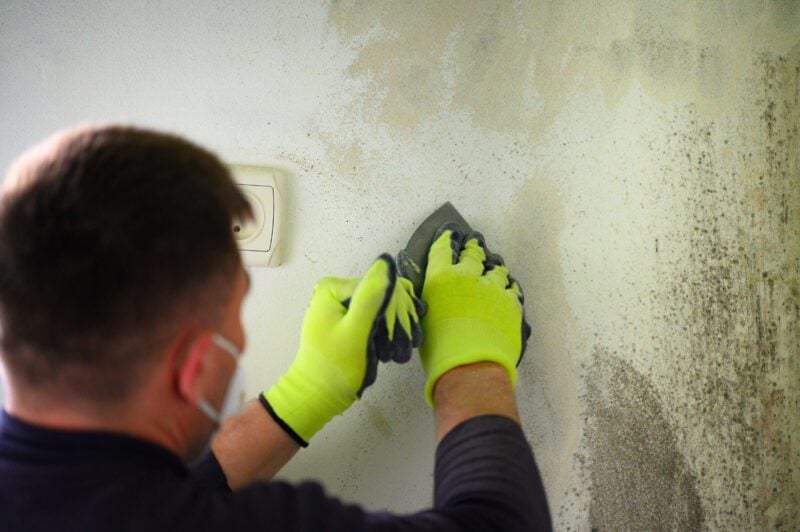
The cost to remove mold depends on the location and how accessible it is. It’s much harder to remove mold from a crawlspace than a basement, but other factors may come into play to prevent mold from occurring.
For example, suppose your home has standing water around the foundation. In that case, you may need to address landscaping and foundation issues to combat your mold problem, which will add considerably to the cost of mold remediation.
Mold can infect almost any area of your home. The more severe the infestation, the higher the cost to remove it. Also, mold removal costs are higher in places like your attic because they are difficult to access, and your insulation needs to be replaced.
| Area | Size of area (square feet) | Cost range |
| Bathroom | 40 to 100 | $400 to $2,500 |
| Crawl space | 500 to 1,500 | $500 to $2,000 |
| Attic | 1,600 to 1,800 | $1,000 to $9,000 |
| Basement | 500 to 1,500 | $3,500 to $5,000 |
| HVAC system | – | $3,000 to $10,000 |
| Whole house | 2,000 | $15,000 to $30,000 |
The Cost Implication of Different Mold Types
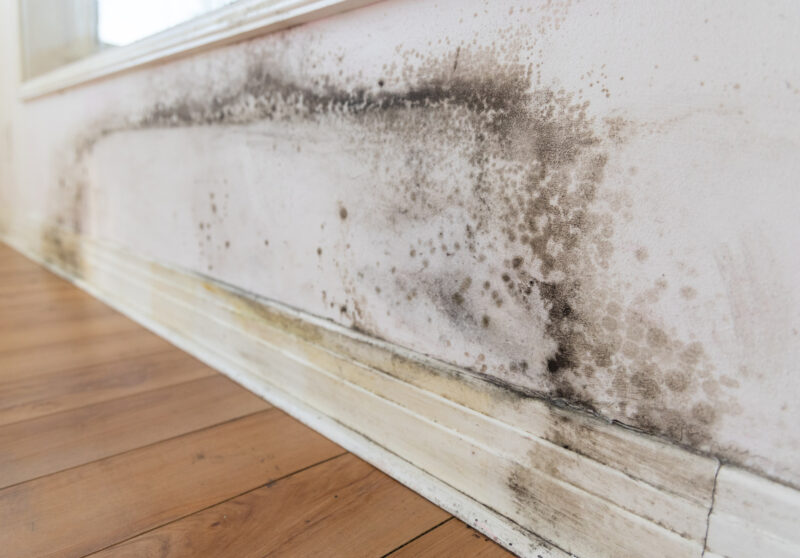
Most people think of black mold when they hear about mold, but there are actually many types of mold that can infect your home and cause problems. Globally, over 100,000 types of mold are identified, but not all of them threaten your home and health. Take a look at the most common types of household molds that need to be addressed.
Cladosporium
Mold species in the Genus Cladosporium can grow indoors or outside your home. Cladosporium is the most common type of black mold, causing a musty odor in your home and leading to allergies and asthma in some individuals.
Penicillium
Molds in the Penicillium Genus are commonly seen in food spoilage but can also infect your home. This mold can grow on many surfaces in your home, including walls, curtains, carpets, and more. Penicillium can be hazardous to humans, especially those who are allergic.
Aspergillus
Another common genus of mold is Aspergillus. It’s a common mold that grows everywhere, and most people breathe it in all the time. However, in individuals with weakened immune systems, a fungal disease called aspergillosis can cause symptoms such as wheezing, shortness of breath, and cough.
Stachybotrys Chartarum (Black Mold)
The most infamous type of mold is Stachybotrys chartarum, commonly known as black mold. It is notorious for producing mycotoxins, which are toxic compounds that can produce a wide range of symptoms in humans and animals.
Understanding How Mold Types Impact Remediation Expenses
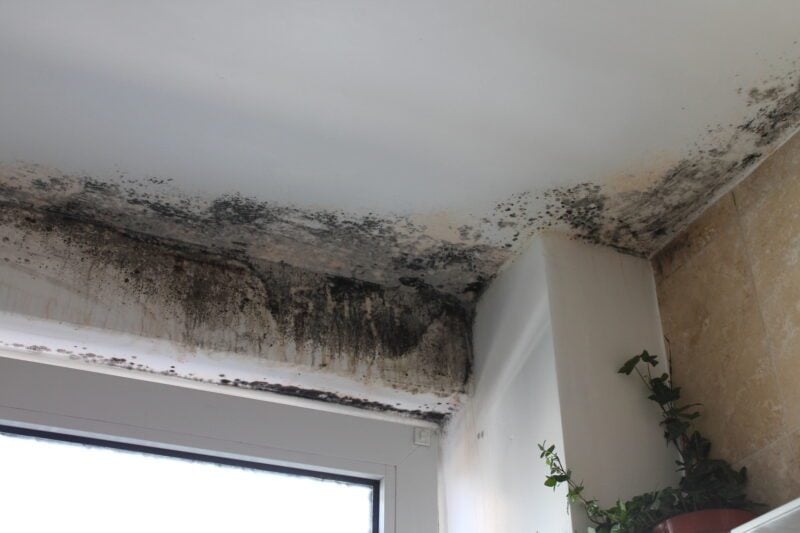
Some types of mold are more challenging to remove, so remediation costs more.
Here are the average costs of remediation for various mold types:
- Aspergillus- $700 to $6,000
- Cladosporium- $700 to $6,000
- Penicillium- $1,500 to $5,000
- Stachybotrys chartarum- $800 to $7,000
Black mold removal costs are often higher because removal is difficult and there is greater risk to remediation experts.
Hidden Costs: Additional Expenses to Consider
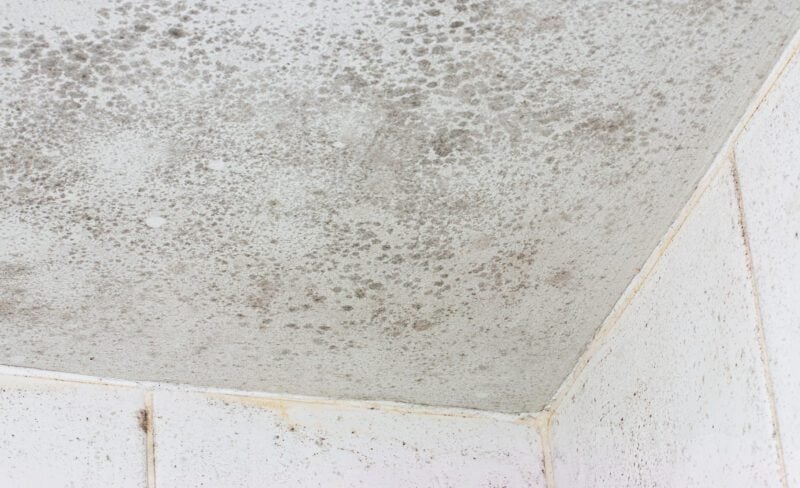
There are hidden costs associated with mold remediation, and it’s essential to consider them before you start. Your mold remediation expert may make recommendations to you or need to hire subcontractors like plumbers and electricians during mold removal and repair of your home, which will drive up the cost of mold removal.
Water Damage Repairs
Major events like burst pipes or tropical storms can cause significant water damage, and the repairs can be quite costly. Typically, you will have to address both the source of the moisture and replace damaged furniture and electronics in these cases.
Source of Moisture
The source of the moisture may require plumbing repairs, basement encapsulation, or landscaping to keep standing water away from your home’s foundation.
Damaged Furniture and Electronics
Water damage can be expensive, even before mold removal costs are factored in. You may need to replace carpets and furniture that were ruined by water.
Electronic devices, even when they aren’t plugged in when the damage occurs, can be ruined by the corrosion caused by water damage.
Extent of Wall Damage
Molds need something to latch onto to grow, and many mold species like high cellulose materials like the paper on drywall. Over time, mold can get under the paint and grow through the drywall.
In the worst cases, extensive wall damage can go beyond drywall and include insulation and timber supports. The more materials you need to replace, the more it will cost for mold remediation.
Matching Existing Wall Finishes
Mold removal professionals can match existing wall finishes in most cases. However, suppose the materials used in your home are no longer available, or new materials look off next to old ones. In that case, replacing more than just the affected area will add to the overall cost.
The Value of Prompt Mold Removal and Remediation
Fixing problems immediately that could lead to mold growth will help ensure that you don’t have to pay high costs for mold removal.
Ideally, you don’t have to wait until health problems become apparent or you have visible signs of mold in your home before you take steps. If you catch moisture problems early, you can avoid many mold issues.
If your mold problem isn’t severe and you catch it early, you can successfully address mold with DIY mold remediation efforts and save yourself thousands of dollars.
The Importance of Mold Remediation
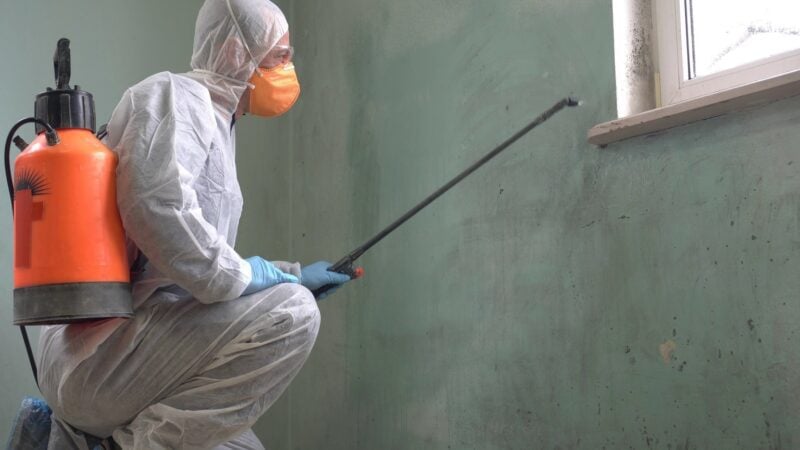
Homeowners typically pay anywhere from $1,500 to $9,000 to remove mold infestations from their homes. That may seem like a lot, but mold has serious consequences and health risks, so it’s a problem that must be addressed.
It’s essential to act quickly and address mold problems in your home as soon as possible because mold spreads rapidly unless the appropriate abatement measures are taken.
As mold grows and spreads in your home, it continues to increase the health risks to you and your family. Structural damage can also occur when the underlying issues that cause mold to grow aren’t addressed, such as water damage, leaks, and condensation.
Methods Used for Remediation
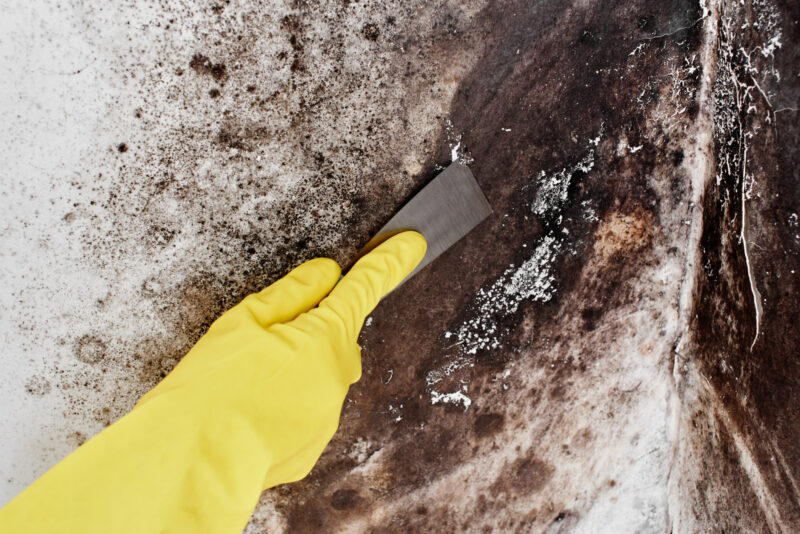
The most common methods used for remediation are chemical treatments and physical removal of infected materials. It’s important to recognize that mold will reappear if the underlying moisture problem is not addressed.
Chemical Treatments
Both homeowners and professionals can use various chemicals to treat mold. Bleach and vinegar are common chemical agents that homeowners use to treat mold. Professionals typically use quaternary ammonium compounds, also known as quats, to tackle mold issues.
Physical Removal
Removing drywall, lumber, insulation, and other building materials that have been infected by mold is sometimes the only effective way to treat severe infestations.
Remediation experts are trained to remove whatever materials they can without affecting the structural integrity of your home. They can also replace insulation, drywall, and flooring as part of the remediation.
Frequently Asked Questions About Mold Remediation Costs
How can I determine if my home needs professional mold remediation?
To determine if your home needs professional mold remediation, there are several signs you can look for. The easiest way to tell if you have a significant problem is to look for health symptoms like asthma, fatigue, rashes, and allergic reactions. Also, watch for stains on walls and persistent weird smells.
How long does the mold remediation process usually take?
Mold remediation is typically a quick process, depending on the severity of the infestation. It can take as little as 48 hours, but if you have a significant mold problem, it can take a few weeks.
Are there any preventative measures to avoid future mold growth?
Humidity is one of the leading causes of excessive mold growth, so keeping all areas of your home dry and well-ventilated is essential.
Is mold remediation covered by homeowner’s insurance?
Generally, mold remediation isn’t covered by homeowner’s insurance. However, if mold results from a covered peril, such as a hurricane or tropical storm, or even a sudden event like a burst pipe, your homeowner’s insurance may cover the damages.

